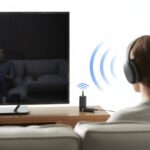Let’s be real—nobody wants to grab their Bluetooth headphones, step outside, and realize they’ve got five minutes of juice left. The simplest way to check if your Bluetooth headphones are fully charged? Watch for a solid indicator light. It usually turns off or changes color when they’re done charging.

Wouldn’t it be great if everything in life had indicator lights? Coffee, socks, you name it. Every headphone brand seems to have its own quirks, but most headphones or charging cases give a clear sign—like a green light or a little chime—when they’re ready. If you’re not sure, just check your phone’s battery widget or glance at the device name; many modern phones and computers show this info right on their screens (see this guide for more).
No more crossing your fingers or hoping for the best. Let’s help you skip the dreaded mid-song battery crash.
Understanding Bluetooth Headphone Charging Indicators
Ever catch yourself wondering if your Bluetooth headphones are actually charging, or just sitting there doing nothing? We’ve all stared at those tiny lights, hoping for a clue. Let’s break down what these signals really mean for your battery and your sanity.
LED Indicator Status Lights
First up: LED indicator lights. These little guys aren’t just for show—they’re basically your headphones’ way of talking to you.
Most models put a light near the charging port to tell you what’s up. A solid red light almost always means your headphones are charging.
You might also spot blinking lights, green lights, amber, or a mix. Some headphones get creative and use lights for charging level, Bluetooth status, or low battery. For instance, Bose headphones show solid green for almost full, amber for “charge me soon.”
Always check your manual for the color code, because every brand likes to do their own thing.
Solid Red Light vs. Other Colors
Let’s face it: solid red almost always means charging. When your battery tops off, most headphones switch to another color—green, blue, or maybe just off.
Here’s a quick color cheat sheet:
| Light Color | Meaning |
|---|---|
| Solid Red | Charging |
| Solid Green | Fully Charged |
| Blinking Red | Low Battery/Error |
| Amber/Yellow | Almost Depleted |
| Off (when plugged) | Fully Charged (sometimes) |
But don’t trust colors blindly. Sometimes green means “ready to pair” instead of “charged.” Manuals exist for a reason, right?
Voice Prompt Notifications
Some headphones try to be helpful and announce things with voice prompts. You might hear a cheerful “Battery full” or “Charging complete” when you plug in or turn on your headphones.
Not every pair does this, but when they do, it saves you from squinting at tiny lights. Voice prompts can also tell you about Bluetooth status and battery level, which feels pretty handy.
Listen for these prompts after plugging in or turning on your headphones. If you don’t hear anything, check if the feature’s enabled—or maybe just crank up the volume.
Checking Battery Status on Different Devices
Nobody likes a surprise shutdown right in the middle of a favorite song. Luckily, checking if your Bluetooth headphones are fully charged is easier than you might think.
Smartphone Battery Indicator
Most modern phones, whether iPhone or Android, show a tiny battery icon next to your Bluetooth headphone name in the Bluetooth menu. It’s like your phone’s way of saying, “Relax, I’m keeping tabs.”
For iPhones, just swipe right on the Home screen and peek at the Batteries widget. You’ll see a real-time battery readout—no magic required.
Plenty of Android phones also display the battery level in the Bluetooth settings or up in the notification bar. If you don’t see it, maybe update your phone or double-check that your headphones support battery reporting. Some headphones just don’t like to share. For more info, check out this guide.
Using bose app and Other Apps
Some headphones come with apps that want to do everything but make you coffee. The Bose app, for example, puts your battery status front and center when you connect. Simple graphics make it easy to spot if you’re at 93% or running low.
Sony, JBL, Beats, and others have their own apps, too. These often show battery readings, firmware updates, sound tweaks, and even a “find my headphones” feature for the forgetful among us.
If your headphones don’t have a companion app, don’t worry. You can use third-party apps like Bluetooth Battery Monitor to check all your connected devices’ battery levels. Sometimes these apps are the only way to get the info you need.
Laptop and Computer Bluetooth Status
Your laptop or desktop might want in on the action. On Windows, just open the Bluetooth settings; lots of wireless headphones show their battery percentage right below their name.
Macs keep it simple. If your headphones support it, the battery percentage pops up in the Bluetooth menu or Control Center. Click the Bluetooth icon and you’ll see the numbers.
But hey, not every computer and headphone combo plays nice. Sometimes your PC or Mac just shrugs and says, “No data.” In those moments, try the manufacturer’s app or advice—or just plug in if you’re not sure. Here’s a charging guide if you need a refresher.
Charging Case and Earbuds Status Lights
We’ve all grabbed our Bluetooth headphones, only to find the battery as dead as our motivation on a Monday. Thankfully, those blinking lights on the charging case and earbuds can clue you in—if you know what to look for.
Charging Case Status Light
Your charging case isn’t just a place to stash your buds or collect lint—it’s the battery’s lifeline. It shows you how much power you’ve got left, so you’re not left humming to yourself.
Most cases use a row of white or amber lights. When all the status lights are solid white, you can bet the case is fully charged.
If the last light blinks, the case is still charging. Some models, like the Bose QC Earbuds, use these lights to show remaining battery charge. The more lights you see, the better.
Here’s a quick guide:
| Light Color | What It Means |
|---|---|
| All solid white | Fully charged |
| Some solid, last blinks | Still charging |
| Only one light, blinking or amber | Battery low |
Earbuds Status Light Explanations
Earbuds love a good light show, too. Each one flashes or glows to tell you what’s happening.
A solid white light usually means fully charged—time to celebrate. An amber (orange) light means they’re charging but not quite done.
No light? They’re either done charging or just powered off and chilling.
Some earbuds get fancy with their signals. For example, blinking white or blue lights might mean pairing mode, but when it comes to charging, the codes are usually simple. For more details on models like the Bose QC Earbuds II, check this status light guide.
Quick rundown:
- Solid white: Fully charged, ready to go.
- Solid amber: Still charging, hang tight.
- Blank/off: Usually means fully charged or powered down.
If your earbuds aren’t flashing like a disco, you’re probably good to go.
Common Signs Your Headphones Are Fully Charged
Let’s be honest: waiting for headphones to finish charging is about as exciting as watching grass grow. Thankfully, most headphones make it obvious—sometimes even dramatic—when it’s time to unplug and rock out.
Battery Level Notifications
Bluetooth headphones these days try to be helpful, even a little chatty. They’ll often give a digital readout, a voice notification, or a beep to announce, “Hey, I’m fully charged!”
If you connect your headphones to a phone or computer, most devices show the battery level next to the Bluetooth icon. Some headphones even shout their battery status when you turn them on. (“Battery full!” is always a relief.) Others might send a push notification through their app or blink a special indicator on the screen.
Don’t forget the controls. Tapping or holding the power button on many models can trigger an audio update about battery life. It’s like your headphones are trying to keep you in the loop—sometimes a little too much, honestly.
Product Light Behavior When Fully Charged
Headphone lights are a bit of a mystery, right? It’s like they’re sending secret signals only battery nerds can decode.
When we charge them up, the indicator light usually glows red or orange. I always imagine they’re embarrassed about being low on juice.
But once they’re fully charged, the lights put on a little show.
Most models flip to green, blue, or sometimes just shut off altogether—stealth mode, basically. For instance, JBL headphones switch off the red light when they’re done charging.
Some headphones go for a bright green to brag about being ready, or blue if they’re feeling fancy.
We should check our user manual to learn the exact code. Some brands treat light colors like a personality contest.
Either way, when the lights change, that’s our signal to unplug and get back to the music. No detective work needed.
What to Do If You’re Not Sure About the Charge Status
We’ve all stared at our Bluetooth headphones, wondering if they’re charging or just pretending. It happens.
Thankfully, there are a few ways to stop guessing and actually figure out their battery life.
Checking for Error Status
Tiny charging lights and weird beeps are easy to miss. If our headphones aren’t showing a clear charging signal, we should look for signs of error status.
Some headphones flash red or blink in odd patterns when something’s wrong. A steady red light usually means charging, but if it’s blinking, we might have a problem.
If there’s no light at all, that could mean they’re fully charged, not plugged in, or just ignoring us. Who knows.
Try unplugging and plugging the cable back in. Sometimes they need a little nudge to cooperate.
Our phones or computers often show the headphone battery percentage. If nothing else works, we can check the manual for those cryptic error codes—yeah, nobody loves reading manuals.
For more help, check out hands-on videos about checking battery life on Bluetooth headphones and watch for specific error states.
Consulting Product Support or Customer Service
Let’s be honest, sometimes we just need to ask for help. It’s not as bad as stopping for directions, right?
Most companies have customer service teams who deal with confused headphone owners every day. We can call, chat, or email for clear instructions or troubleshooting tips.
For brand-specific advice, product support pages like JBL’s guide on charging indicators break down what the lights actually mean.
It helps to have our headphone model number ready. We might find support pages with photos, step-by-step guides, or even online chat.
If nothing else, at least we know we’re not the only ones playing the “Is It Charged?” guessing game.
Maximizing Headphone Battery Life
We all want our Bluetooth headphones to last longer, but batteries just don’t stay young forever. With a few tweaks to our habits, though, we can keep them running strong and avoid those dreaded low battery warnings mid-song.
Conserving Battery Power Tips
Let’s be real—nothing ruins a good playlist like a dying battery. Here’s how we can squeeze out more listening time:
- Lower the volume: Cranking music drains the battery faster. Our ears and batteries will appreciate a break.
- Turn off extra features: Disabling noise-canceling or LED lights can add hours to our battery life.
- Power down when not in use: Instead of just pausing, actually power off the headphones. More charge for later.
- Keep them cool: Extreme heat or cold ages batteries faster, so avoid leaving headphones in the car or out in the sun.
- Stay within Bluetooth range: If we wander too far from our phone, the headphones keep searching and waste battery. Staying close saves power.
These simple changes can really help us avoid the dreaded “battery low” interruption.
When to Charge and When to Unplug
Charging seems simple, but our battery probably has opinions. To get the most battery life, experts say it’s best to keep the charge between 20% and 80%.
If we plug in at the first beep and leave them charging all night, we’re actually making the battery work harder. Once they’re fully charged, unplug them.
Leaving headphones connected for hours after they’re full can slowly wear out the battery. It’s smarter to charge when low and unplug when done.
For more details, check out these tips to maximize your wireless headset battery life.
Additional Tips and Accessories for Bluetooth Headphones
Keeping headphones charged is just part of the equation. Taking care of what we plug in our ears—and how we use them with other devices—makes listening so much better.
Let’s chat about accessories, speakers, and the magic (or frustration) of connecting everything together.
Speaker and Headphone Accessories
We never realize how many little pieces keep headphones going until we lose a charging case or destroy a cable. A good carrying case keeps headphones safe in backpacks that seem to eat cords for breakfast.
Replacement ear tips are lifesavers, especially when our favorites start looking a bit rough.
Charging cables are like socks—one is never enough. Keeping a spare in our bag is always a smart move.
Some brands, like JBL, use indicator lights to show when headphones are fully charged (the red light turns off and the music can start). See more details on knowing when headphones are fully charged.
There are even third-party adapters that let us use old-school wired headphones with newer wireless gadgets. Why toss them if the sound still rocks?
Wearables, Soundbars, and Home Cinema Connections
Trying to hook up headphones to other gadgets at home? Honestly, it can feel like you’re missing a few puzzle pieces.
Smart wearables—think watches or fitness bands—usually let you pair Bluetooth headphones. That’s perfect for a late-night TV binge or a run when you don’t want to bother anyone.
Soundbars change the game for movie nights. But before you get comfy, check if your soundbar supports Bluetooth or has an audio-out jack for headphones.
Some soundbars actually let you play music through speakers in one room, while someone else zones out with headphones somewhere else. That’s a win for anyone who’d rather not hear explosions shaking the walls.
Home cinema systems throw even more choices at you. Most of them support wireless headphones or work with Bluetooth transmitters, so you don’t have to trip over cords during the big finale.
Honestly, juggling all these connections can feel a little sci-fi. Still, it beats having to explain your playlist to everyone in the house.
- How to Tell if Bluetooth Headphones Are Fully Charged: No More Power Outage Surprises - November 16, 2025
- How to use a fitness tracker for weightlifting: Because Your Biceps Deserve More Data - November 15, 2025
- How to Use a Fitness Tracker as a Camera Remote: Snap Pics While Counting Steps - November 15, 2025






